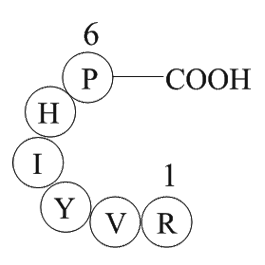Archives
- 2025-12
- 2025-11
- 2025-10
- 2025-09
- 2025-03
- 2025-02
- 2025-01
- 2024-12
- 2024-11
- 2024-10
- 2024-09
- 2024-08
- 2024-07
- 2024-06
- 2024-05
- 2024-04
- 2024-03
- 2024-02
- 2024-01
- 2023-12
- 2023-11
- 2023-10
- 2023-09
- 2023-08
- 2023-07
- 2023-06
- 2023-05
- 2023-04
- 2023-03
- 2023-02
- 2023-01
- 2022-12
- 2022-11
- 2022-10
- 2022-09
- 2022-08
- 2022-07
- 2022-06
- 2022-05
- 2022-04
- 2022-03
- 2022-02
- 2022-01
- 2021-12
- 2021-11
- 2021-10
- 2021-09
- 2021-08
- 2021-07
- 2021-06
- 2021-05
- 2021-04
- 2021-03
- 2021-02
- 2021-01
- 2020-12
- 2020-11
- 2020-10
- 2020-09
- 2020-08
- 2020-07
- 2020-06
- 2020-05
- 2020-04
- 2020-03
- 2020-02
- 2020-01
- 2019-12
- 2019-11
- 2019-10
- 2019-09
- 2019-08
- 2018-07
-
We hypothesized that the atopic phenotype may be partially
2019-11-14

We hypothesized that the atopic phenotype may be partially influenced by an altered binding and/or signalling due to the amino-acid substitution in the receptor protein. The principal aim of this study was to investigate the signalling mechanisms of the variants CysLT1-G300S and CysLT1-I206S induced
-
br Conflict of interest statement br
2019-11-14

Conflict of interest statement Acknowledgement The research leading to these results has received funding from the European Union Seventh Framework Programme (FP7/2007-2013) under grant agreement n° 278742 (Eurosarc) Introduction Pseudomyogenic hemangioendothelioma/epithelioid sarcoma-like
-
Fmoc-Ala-OMe synthesis br Materials and methods br Results b
2019-11-14

Materials and methods Results Discussion PYR-41 inhibits UBE1 activity that catalyses an initial step in the ubiquitination reaction. In the present study, we examined the role of this enzyme in sperm-egg fusion by inhibiting UBE1 enzymatic activity in eggs. Our results suggest that PYR-41
-
Consistent with the known tolerance of
2019-11-14

Consistent with the known tolerance of the Suzuki–Miyaura reaction to a wide range of aryl substituents, we subsequently found that the commercially available 3-hydroxyphenylboronic Norfloxacin hydrochloride pinacol ester () could be coupled to , to give directly and in comparable yield. Smooth co
-
Enzyme activity loss during the hydrolysis
2019-11-13

Enzyme activity loss during the hydrolysis process has traditionally been associated with thermal, mechanical, and/or chemical mechanisms (Okino et al., 2013, Ye et al., 2012, Zhang et al., 2010). Due to the recent discovery of enzyme activity loss due to interaction with substrate, it is important
-
DAMGO Studies on the external dehydrogenases of N
2019-11-13

Studies on the external dehydrogenases of N. crassa have shown that the NDE1 protein is a Ca2+-dependent external NADPH dehydrogenase, while NDE2 is characterized as a dehydrogenase oxidizing both cytosolic substrates (external NADH and/or NADPH) (Carneiro et al., 2004, Melo et al., 2001). All three
-
In vitro studies in NSCLC cell lines expressing
2019-11-13

In vitro studies in NSCLC cell lines expressing EGFR mutants (T790M mutation, exon 19 deletion E746-A750, L858R/T790M double mutation), demonstrated that Rociletinib potently inhibits proliferation in the mutant EGFR NSCLC Ketoprofen with Growth inhibition (GI50) values ranging from 7 to 32 nmol/L.
-
Although the implication of DA and glutamate signaling cross
2019-11-13

Although the implication of DA and glutamate signaling crosstalk in drug-evoked neuronal adaptations is well acknowledged, targeting the cognate receptors to alleviate symptoms is associated with a loss of efficacy over time and the appearance of severe sides effects, likely due to the involvement
-
br Conflict of interest statement br Acknowledgements
2019-11-13

Conflict of interest statement Acknowledgements Introduction Spending their last days on earth having already lost many cognitive functions remains a major fear of elderly people. Although during the last century their lifespans increased, the so-called “old-age diseases” became more and mo
-
This study focused on NPC L because it is
2019-11-13

This study focused on NPC1L1 because it is critical for intestinal Clofibric Acid of both dietary and biliary cholesterol.1, 7, 8 Overall, regulation in the intestine of cholesterol, BAs, and lipids by FGF19 and SHP may involve the combined actions of regulation of other genes that were identified
-
The assembly and maturation of
2019-11-13

The assembly and maturation of invadopodia can be initiated by chemical stimuli such as the epidermal growth factor (EGF), as well as the mechanical signals from extracellular matrix (ECM). Upon binding, EGF activates the EGF receptor (EGFR), which further activates several intracellular signaling p
-
Introduction The annual global market of industrial enzymes
2019-11-13

Introduction The annual global market of industrial Cetrorelix is reported to be billions of USD [1], [2], [3], [4], [5], [6], [7], and impacts commercial sectors that include energy, animal feed, household products, food processing and pharmaceuticals [1], [2], [5], [6]. Enzymatic processing is e
-
br O GlcNAcase Human OGA is a
2019-11-13

O-GlcNAcase Human OGA is a multidomain protein with an N-terminal domain similar to glycoside hydrolase family 84 (GH84) enzymes, a stalk domain, a C-terminal pseudo histone acetyltransferase (HAT) domain, and several low-complexity regions (Figure 1f) [43]. A splice variant that lacks the HAT do
-
Introduction Taenia solium is the
2019-11-13

Introduction Taenia solium is the causative agent of human taeniasis/cysticercosis and porcine cysticercosis, a major health problem and a veterinary economic challenge in developing countries of Latin America, Africa, and Asia. In Mexico, approximately 500 human neurocysticercosis cases were repor
-
While we previously demonstrated that
2019-11-13

While we previously demonstrated that TraG is inhibited by specific transglycosylase inhibitors and that enzymatic activity is strongly reduced upon mutation of the potential catalytic core (Arends et al., 2013), the enzymatic mechanism of both domains was not assigned. Here, by mass spectrometry an
14333 records 919/956 page Previous Next First page 上5页 916917918919920 下5页 Last page